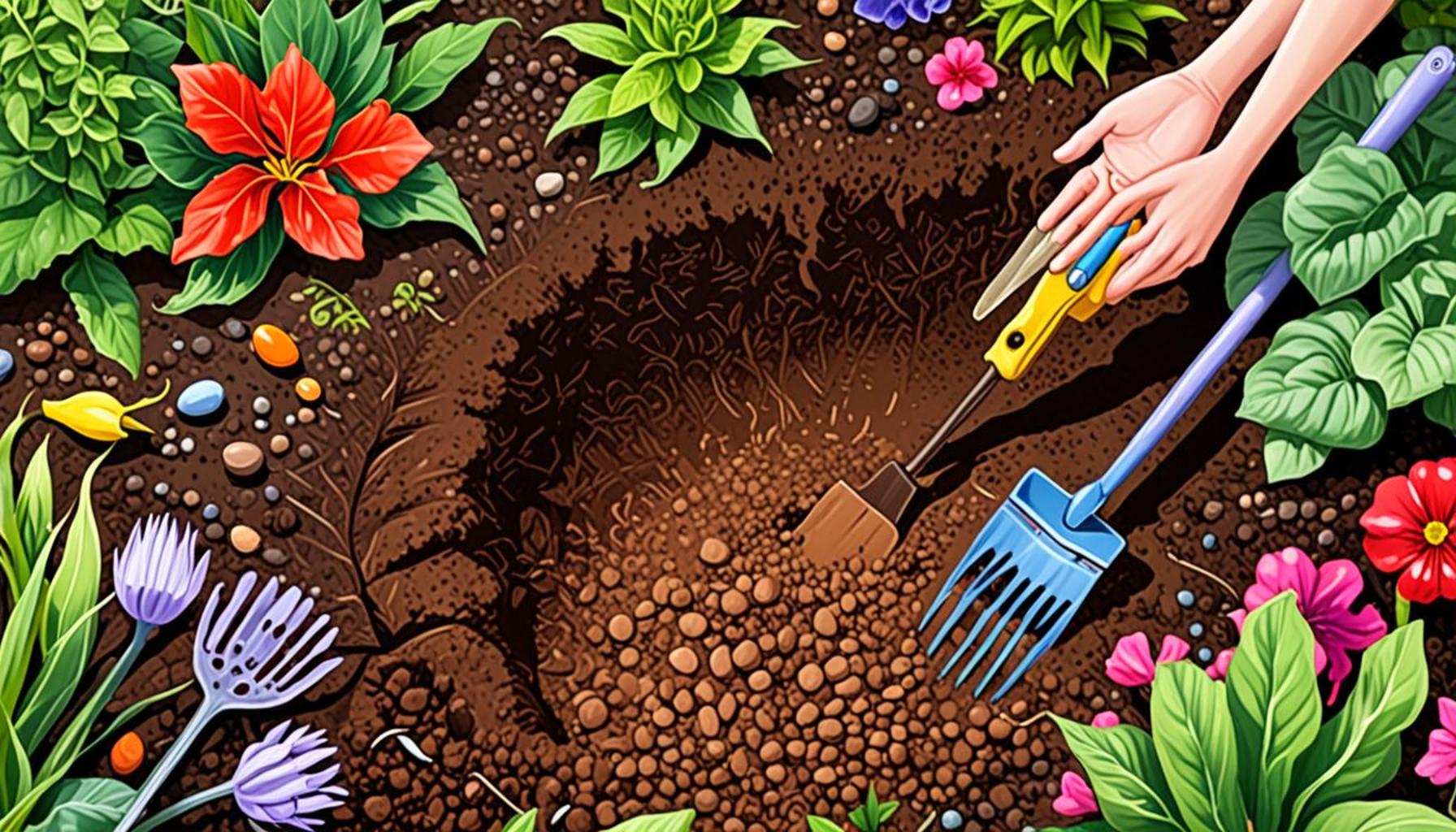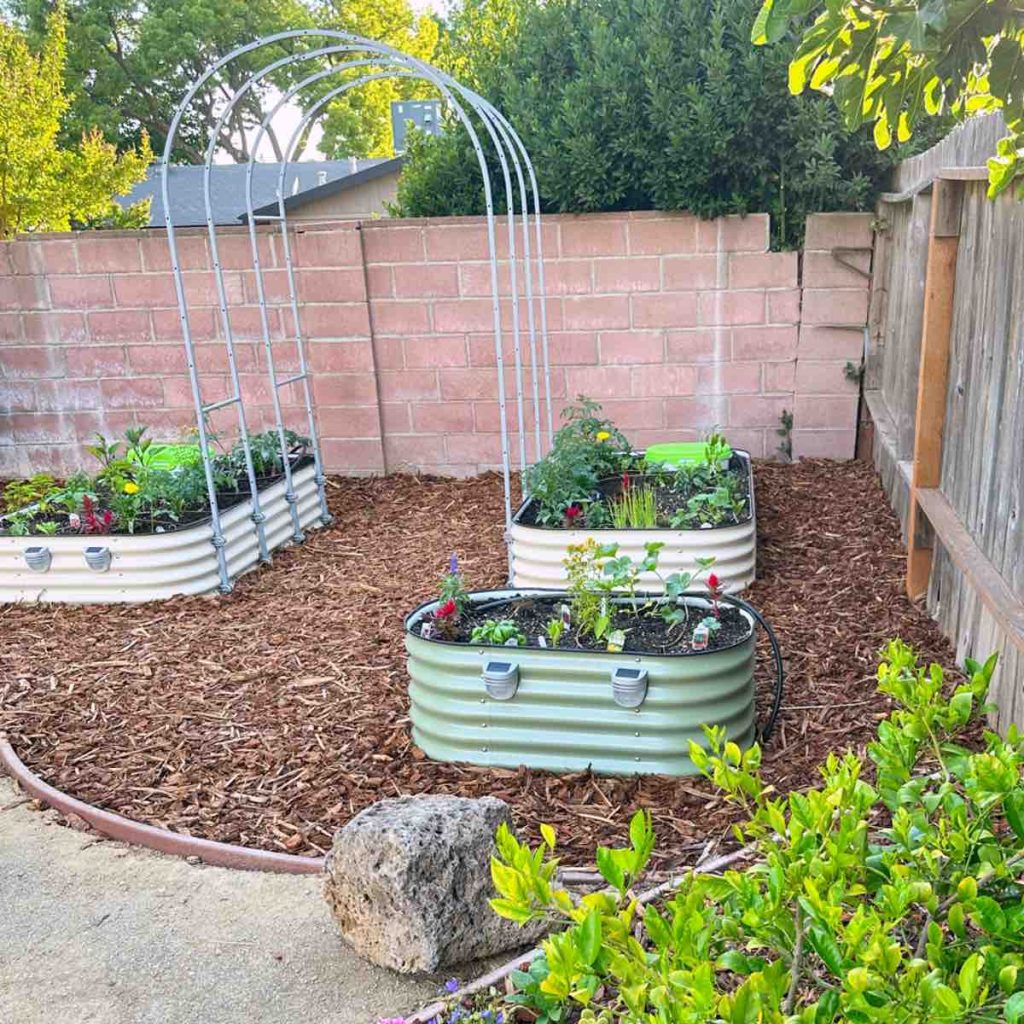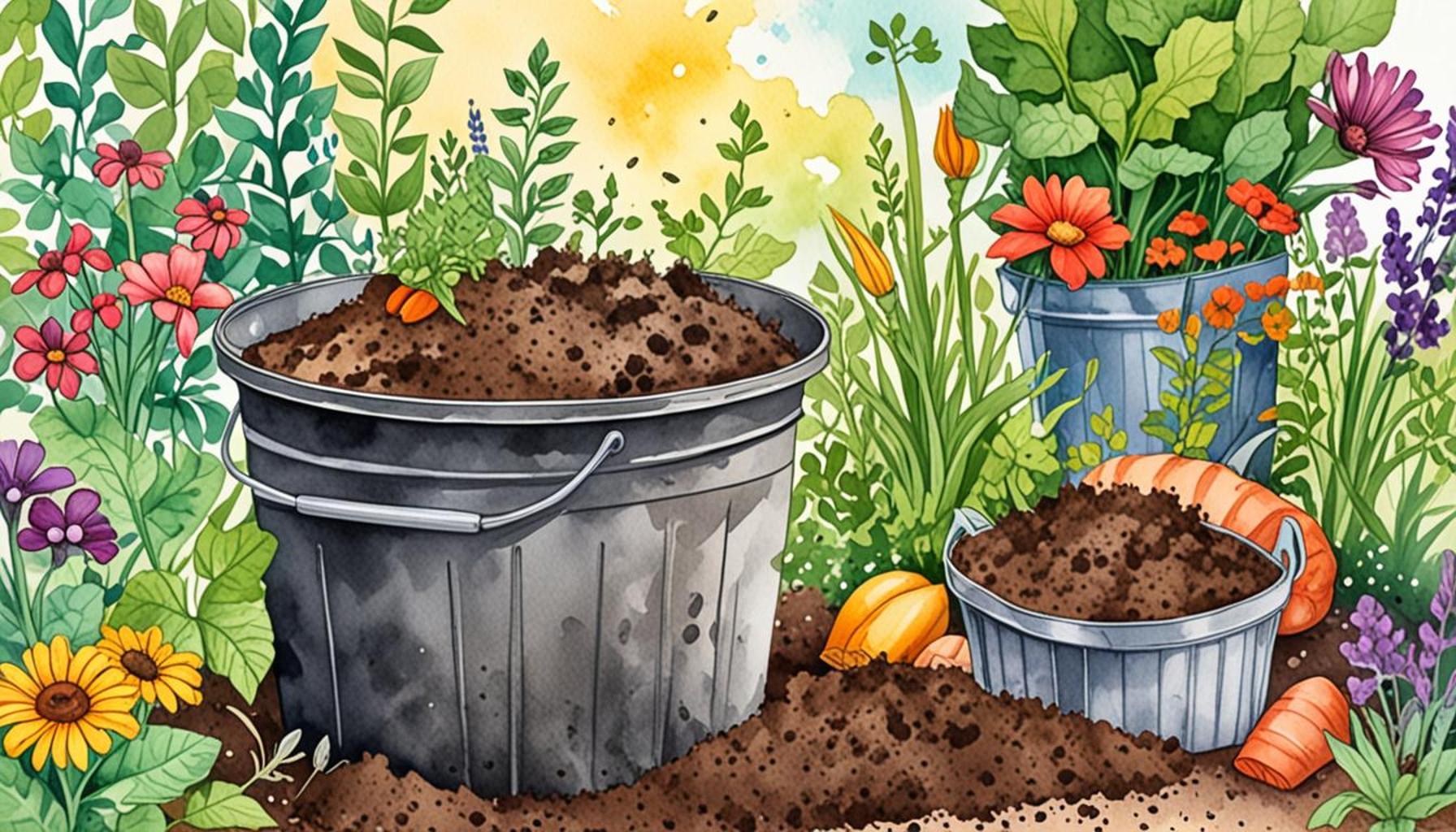How to Choose the Best Materials to Enrich the Soil in Your Garden

Understanding Soil Composition for a Thriving Garden
Plant vitality, yield, and resilience are all rooted in the health of your soil. This natural medium, often overlooked, is a complex ecosystem that supports life through nutrient retention, aeration, and microbial activity. Thus, crafting a garden requires more than just a haphazard selection of plants; it demands careful consideration of the soil’s composition and its specific needs.
Different enrichment materials can boost your soil’s structure and fertility, making it critical to identify which ones can best serve your garden’s unique ecosystem. Here are some widely utilized options for enriching soil:
- Compost: Often hailed as ‘black gold’, compost is an enriching mix of decomposed organic matter, including kitchen scraps, leaves, and grass clippings. By regularly adding compost, gardeners can provide a slow-release nutrient source that encourages biodiversity and supports beneficial organisms.
- Manure: This natural fertilizer, derived from the waste of livestock, is not only rich in nutrients but also improves soil texture and aeration. However, it is important to use well-aged manure to prevent burns to plants and the introduction of pathogens.
- Peat Moss: Particularly useful for acid-loving plants like blueberries or azaleas, peat moss enhances soil moisture retention. It helps create a loose, aerated environment conducive to root growth.
- Bone Meal: As its name suggests, this product is made from ground animal bones and is an outstanding source of phosphorus. Available phosphate promotes robust root systems and flowering, making it particularly beneficial for bulbs and productive plants like tomatoes.
In addition to selecting the right materials, understanding soil pH levels is vital for successful gardening. Most plants thrive in a slightly acidic to neutral pH range of 6.0 to 7.0. Conducting a soil test can offer insights into your garden’s pH and nutrient availability, guiding you toward tailored amendments.
Moreover, the interaction between soil and local climate conditions plays a pivotal role. For instance, gardeners in the arid Southwestern states might seek to incorporate more organic mulch or water-retentive materials compared to those in the humid Southeast. This localized approach ensures the soil supports not merely the plants, but also the surrounding ecosystem.
Embarking on the journey of soil enrichment may seem overwhelming at first. However, with careful observation and incremental changes, a rich, productive garden is well within reach. Diving into soil health not only leads to vibrant gardens but contributes to a sustainable future—one where we thrive alongside nature.

DISCOVER MORE: Click here to learn about beneficial insects
Understanding Soil Enrichment Materials
Choosing the appropriate materials to enhance your garden’s soil transcends the simple act of scattering a few amendments on the surface. It requires a nuanced understanding of the nutrient needs of your plants, the current condition of your soil, and how different materials work to boost its quality. Each amendment serves a unique purpose, and understanding when and how to use them can significantly influence the vitality and productivity of your garden.
To effectively choose your soil enrichment materials, consider multiple factors that can guide your decision-making process:
- Soil Type: The physical characteristics of your soil—ranging from sandy and clayey to loamy—are crucial in determining which amendments will be most beneficial. For instance, sandy soils typically drain quickly and may lack essential nutrients; thus, adding organic matter such as compost or well-rotted manure is essential for improving moisture retention. Conversely, clay soils are dense and retain water, which may lead to poor aeration. Incorporating materials like gypsum can improve the structure and drainage of clay soils, allowing roots to access oxygen more easily.
- Plant Requirements: Different plant species have distinct nutritional needs that vary throughout their growth cycles. Leafy greens like spinach and lettuce thrive on nitrogen-rich amendments, such as alfalfa meal or blood meal, promoting lush leaf production. On the other hand, flowering plants and fruiting vegetables like tomatoes and peppers require a balanced supply of phosphorus and potassium, which can be found in bone meal and potassium sulfate. It’s beneficial to research the specific requirements for the plants you intend to cultivate in your garden.
- Availability of Materials: Assess the materials that are readily accessible in your locality. Gardeners in urban areas might prefer ready-made fertilizers available at garden centers, while those in rural or agricultural regions may have easy access to homemade compost or farm-derived products like poultry litter. Using locally sourced materials does not only reduce transportation costs but also often guarantees greater freshness and lowers the risk of introducing unwanted pathogens into your soil.
- Seasonal Considerations: The timing of your soil enrichment efforts can significantly influence their effectiveness. Early spring is typically an ideal time to mix in compost, providing an initial nutrient boost for seedlings. In contrast, fall is the season for adding organic mulch that, as it decomposes throughout the winter, will contribute beneficial microbial life and improve soil structure come spring. Understanding your local climate and seasonal patterns will help you optimize your enrichment strategies.
A further aspect to consider is the impact of the materials on soil structure. Healthy soil not only supports plant health but also fosters a thriving ecosystem of beneficial organisms, such as earthworms and helpful bacteria. By enhancing the structure of your soil, you increase nutrient availability and create a conducive environment for these organisms to flourish. This symbiotic relationship is essential for maintaining soil fertility and biological diversity in your garden.
In conclusion, enriching your soil should be viewed as a continual process rather than a one-time task. Regular monitoring of soil health, incorporating amendments wisely, and making incremental changes can lead to a thriving ecosystem that benefits not just your garden, but the broader environment as well. As you navigate through this enriching journey, maintain a sense of curiosity and willingness to experiment with various materials to uncover the most effective combinations for your unique gardening endeavors.
When it comes to enriching your garden soil, understanding the diverse materials at your disposal can make a significant difference. This process not only enhances soil fertility but also promotes sustainable gardening practices that lead to healthier plants. To start with, organic matter is paramount. Adding well-rotted compost or aged manure can improve soil structure and nutrient content. These additives feed the microorganisms in the soil, leading to enhanced biodiversity and improved soil health. Consider ingredients like leaf mold, which retains moisture and provides humus, acting as a sponge in your garden.Another material to consider is peat moss, which improves soil aeration and moisture retention. However, its harvesting can impact ecosystems, so it’s crucial to use it sparingly and responsibly. Alternatives like coconut coir can provide similar benefits without the environmental concerns, making it a great choice for eco-conscious gardeners.Moreover, utilizing mulch not only conserves soil moisture but also suppresses weeds as it decays, contributing additional nutrients back into the soil as it breaks down. Different types of mulch, such as wood chips or grass clippings, can be chosen based on availability and aesthetic preference.Lastly, incorporating minerals and fertilizers can significantly balance soil pH levels and nutrient deficiencies. For instance, lime can help reduce acidity, while bone meal adds phosphorus essential for root development. However, be cautious with the quantities, as over-fertilization can lead to soil degradation.Understanding the properties of various materials is vital. Regular soil testing is recommended to assess nutrient levels, pH, and organic matter content to make informed decisions. By prioritizing the right materials, your garden can flourish, yielding lush, vibrant crops and plants while fostering an environment rich in biodiversity. This understanding will allow for a more sustainable and productive gardening experience, ensuring that your garden remains a thriving ecosystem for years to come.
DIVE DEEPER: Click here to learn more about cover crops and soil health
Exploring Specific Soil Enrichment Materials
Once you have established a clear understanding of the factors affecting soil enrichment, it is time to delve into the specific materials you can utilize. Numerous options exist, each bringing unique benefits to your garden. Below are some widely recognized soil enrichment materials, along with their considerations:
- Compost: Often dubbed the ‘black gold’ of gardening, compost is a mixture of decomposed organic matter that enhances soil structure, adds nutrients, and supports microbial life. You can create your own compost with kitchen scraps, leaves, and grass clippings, but be sure to maintain a balanced mix of greens (nitrogen-rich) and browns (carbon-rich materials). The result is a rich, slow-release fertilizer that improves soil fertility over time.
- Manure: Cow, chicken, and horse manure are great natural fertilizers that introduce a range of nutrients while improving soil texture and moisture retention. However, it’s important to use well-composted manure to avoid burning plants with nitrogen spikes or introducing pathogens. Look for products labeled as ‘aged’ or ‘composted’ for the safest use.
- Green Manure: Green manures are cover crops grown specifically to enhance soil fertility when tilled back into the soil. Plants such as clover, rye, and vetch improve nutrient content and prevent soil erosion. By growing these crops, you can improve nitrogen levels naturally, and their decomposition during tilling helps increase organic matter in the soil.
- Bone Meal: This organic fertilizer is an excellent source of phosphorus, promoting vigorous root development and flowering. It’s particularly beneficial for those growing root vegetables and flowering plants. Ensure you use it sparingly, as too much can lead to nutrient imbalance in the soil.
- Pine Bark or Wood Chips: Often used as mulch, these materials help reduce evaporation, suppress weed growth, and add organic matter as they decompose. While they may be acidic, making them ideal for acid-loving plants like blueberries and azaleas, it’s important to monitor the pH levels of your soil regularly, especially if you’re working with various plant species.
- Peat Moss: This material helps retain moisture and enhances soil structure, making it particularly useful for sandy soils. However, it’s worth noting that peat bogs play a critical ecological role, which raises sustainability concerns. Opt for alternatives like coconut coir for a more eco-friendly option that provides similar benefits without depleting natural habitats.
In addition to selecting the right materials, consider your application methods. Integrating amendments into the soil is often more effective than top-dressing, as this allows for better nutrient absorption and minimizes losses through erosion or runoff. Utilizing a soil test kit can help you identify nutrient deficiencies, guiding you toward the most effective amendments tailored to your specific soil needs.
Finally, always remember that enriching your soil is not a one-time affair; it requires patience and an ongoing commitment to monitoring. Establishing a routine schedule for testing soil health, adjusting pH levels, and experimenting with different combinations of materials is essential in cultivating a thriving garden. Collaborate with local extension services or gardening clubs to share experiences and learn which soil enrichment strategies have proven successful in your area.
DISCOVER MORE: Click here to learn about rainwater harvesting
Conclusion
As we’ve explored throughout this article, choosing the best materials to enrich the soil in your garden is crucial for cultivating a thriving and productive environment. The unique properties of compost, manure, green manure, bone meal, and various mulching materials like pine bark significantly impact soil quality, nutrient availability, and plant health. Each material carries its own set of benefits and considerations that must be tailored to the specific needs of your garden and the type of plants you wish to grow.
It’s essential to approach soil enrichment as an ongoing project rather than a one-time effort. Implementing a routine of soil testing can help you learn about your soil’s current nutrient levels, enabling you to make informed decisions on amendments that will support your garden’s growth. Additionally, mixing different materials thoughtfully can lead to a more balanced soil ecosystem that meets the diverse needs of your plants.
Moreover, consider the ecological impact of your choices. By opting for sustainable materials, such as alternatives to peat moss, you contribute positively to the environment while improving your garden. Collaborating with local gardening communities can also yield valuable insights into effective soil enrichment practices tailored to your region.
Ultimately, the key is to remain curious, experiment with different combinations, and adapt based on the results you observe. As you enrich your soil, you’re not just nurturing your plants but also fostering a vibrant ecosystem that can yield fruitful results for years to come. Dive deeper into the world of soil health, and watch as your garden flourishes into a landscape of beauty and bounty.



